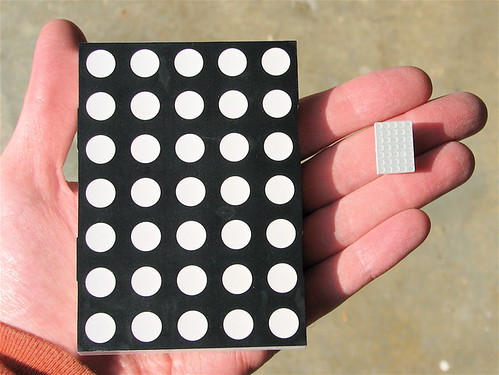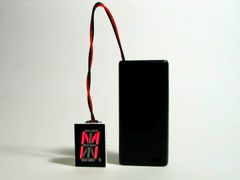
It’s a pumpkin! It’s a Jack-o-lantern! It’s an electronics project! It’s… a Cylon!
Cylons are great. They’re evil, menacing, and shiny. They have glowing red lights, computer-monotone voices, and they aim as precisely as imperial stormtroopers.
For halloween this year, we made Cylon Jack-o-lanterns in both large and small versions.
The design consists of two parts, a pumpkin-carving part and an electronics part. The big idea, of course, is to make the Cylon’s red eye scan back and forth.
How well does it work? Take a look! (Youtube)
This week’s Weekend Projects Podcast at Make Magazine is about making a programmable LED pumkin.
Our Cylon is made with a very different approach. It runs on a 9V battery and uses two cheap integrated circuits (a 555 and 4017) that together control six LEDs (or six groups of LEDs).
Circuits like this are quick, easy, and cheap to build. It’s also fun merely from the standpoint of making something that people might expect to require a microcontroller. For this particular circuit, it turns out to be cheaper and faster to do it without one.
If you’re handy with a soldering iron, you can build this circuit for less than ten dollars, in less than two hours, without any programming at all.
Continue reading Make A Cylon Jack-O-Lantern →


























